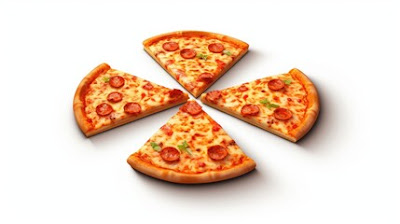Understanding Nutrition Facts for Domino’s Pizza:
Pizza lovers would surely pick Domino's Pizza because of the variety of its pizza, sides, and desserts. However, it is always encouraged to know the nutrition facts and values of the items you may consume, especially if you want to keep—or maintain—your weight. This article will explain the nutritional value of a few items on the Domino’s menu and the methodologies for determining this value.
1. Table of information on the nutritional value of Domino's pizza.
Stats on every menu item, including fats, proteins, carbs, calories, and sodium levels, are provided on Domino's official website, which is easy to access and look up. This is a great advantage for people who want nutrition information, as it allows them to eat their favorite dishes while still balancing their meals.
2. Some important elements of nutrition and what their functions are in the human body.
Calories: It is the amount of energy content a certain food can provide. If a person has a set amount of calories they need in a day, it is wise to keep track of how much they can get through food to avoid weight gain.
Fat: This is the macronutrient that embodies both the unsaturated and saturated fats. Moderation in the consumption of fats is key, particularly saturated fats, as they can raise cholesterol levels.
Protein: It is a powerful macronutrient that builds tissues and assists in the repairing of muscles. Protein is effective for people on a diet as it prevents hunger pangs.
Carbohydrates: They serve as the primary energy source and include both sugars and fibers. It's important to keep an eye on carbohydrate intake, particularly for those who are managing their blood sugar levels.
Sodium: This is a key component of salt. Elevated sodium levels can lead to high blood pressure and other health concerns, making it essential to monitor your intake.
3. Calculating Nutrition for Domino’s Items
Here’s how to determine the nutritional values of items on Domino’s menu:
a. Start with the Basic Nutritional Information:
Refer to Domino’s official nutrition guide or website for details on each item. For instance, a standard slice of pepperoni pizza typically contains around 300 calories, 14 grams of fat, 12 grams of protein, 30 grams of carbohydrates, and 800 mg of sodium.
b. Adjust for Portion Sizes:
If you have more than one slice or a different portion, be sure to adjust the values accordingly. For example, if you eat two slices of the pizza mentioned, you would double the nutritional values: 600 calories, 28 grams of fat, 24 grams of protein, 60 grams of carbohydrates, and 1600 mg of sodium.
c. Combine with Other Menu Items:
When enjoying a meal that includes multiple items, such as pizza, breadsticks, and a drink, add up the nutritional value of each item. For example, if a serving of breadsticks contributes 150 calories and 6 grams of fat, include these in the pizza totals to find the overall meal nutrition.
d. Use Online Calculators:
For more accurate tracking, consider using online tools and apps that can calculate nutritional values based on your specific meal choices and portion sizes.
4. Tips to Make Healthier Choices
Pick Thin Crust: A thin crust pizza has fewer calories and less fat than a regular or deep-dish crust.
Cut Back on Cheese: Ask for less cheese or a lighter cheese option to reduce fat and calories.
Add More Veggies: Extra vegetables on your pizza boost fiber and nutrients while keeping calories low.
Keep an Eye on Portions: Pay attention to how much you eat and try to balance your pizza with healthier sides, like a salad, for a complete meal.
Be Aware of Salt: If you need to limit your salt intake, be careful with high-sodium items and choose options with less salt.
5. To wrap up
Knowing what's in your favorite Domino's dishes can help you eat better and keep a healthy diet. When you figure out the calories fat, protein, carbs, and salt in each item, you can still enjoy your food while keeping an eye on your health goals. Keep in mind, that it's all about balance, and making smart choices can lead to a healthier life without giving up taste.
- How can you cut down on calories when you order from Domino's Pizza?
- What changes can you make to your order to lower the salt in your Domino's pizza while still enjoying it?
- What should you think about nutrition when picking different pizza crusts at Domino's?
- How can you add healthier sides and drinks to your Domino's meal to even out the nutrition?
- How important is watching your portion size when you want to manage how your Domino's Pizza order affects your nutrition?





.png)



0 Comments
please do not enter spam link in the comment box.